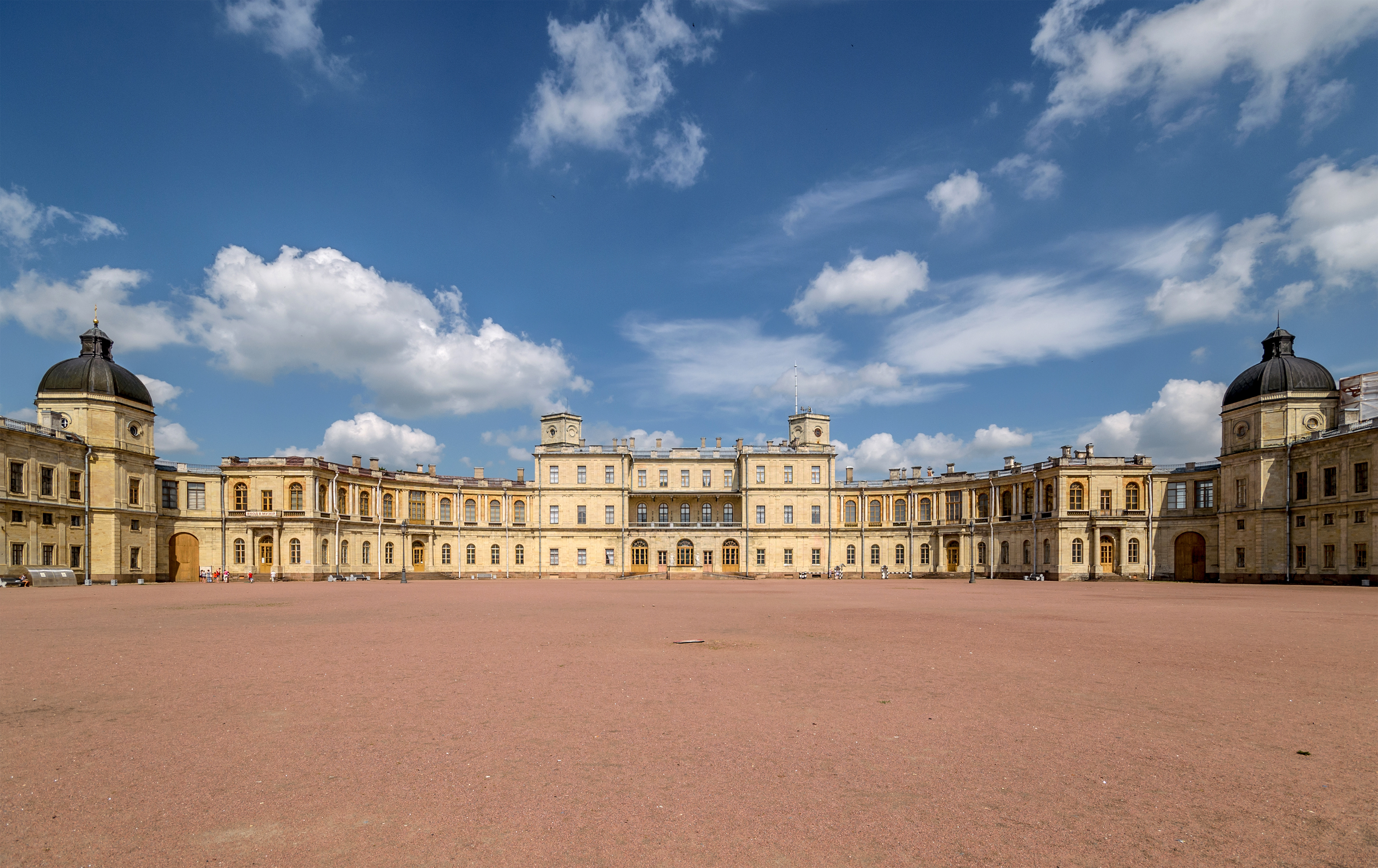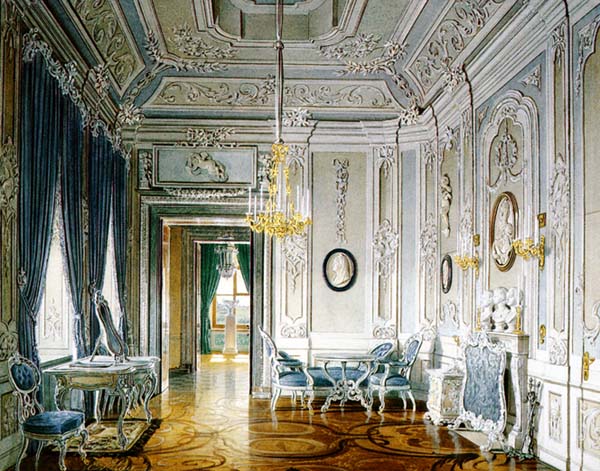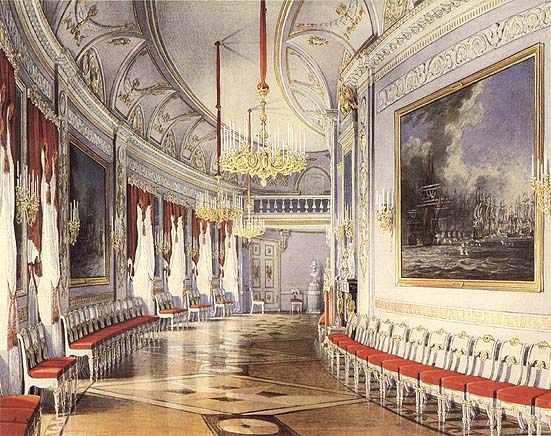|
Gatchina
The town of Gatchina ( rus, Га́тчина, , ˈɡatːɕɪnə, links=y) serves as the administrative center of the Gatchinsky District in Leningrad Oblast, Russia. It lies south-south-west of St. Petersburg, along the E95 highway which links Saint Petersburg and Pskov. Population: It was previously known as ''Khotchino'', ''Gatchina'' (until February 14, 1923), ''Trotsk'' (until August 2, 1929), and ''Krasnogvardeysk'' (until January 28, 1944). Gatchina, the largest town in Leningrad Oblast, is best known as the location of the Great Gatchina Palace, one of the main residences of the Russian Imperial Family during the 18th and 19th centuries. The historic center and Gatchina Palace are part of the UNESCO World Heritage Site's " Historic Centre of Saint Petersburg and Related Groups of Monuments". Another popular tourist attraction in Gatchina is the Prioratsky Palace. Gatchina has placed highly in quality-of-life rankings in Russia. History Early ... [...More Info...] [...Related Items...] OR: [Wikipedia] [Google] [Baidu] |
Gatchina Palace, Southern Facade
The town of Gatchina ( rus, Га́тчина, , ˈɡatːɕɪnə, links=y) serves as the administrative center of the Gatchinsky District in Leningrad Oblast, Russia. It lies south-south-west of St. Petersburg, along the E95 highway which links Saint Petersburg and Pskov. Population: It was previously known as ''Khotchino'', ''Gatchina'' (until February 14, 1923), ''Trotsk'' (until August 2, 1929), and ''Krasnogvardeysk'' (until January 28, 1944). Gatchina, the largest town in Leningrad Oblast, is best known as the location of the Great Gatchina Palace, one of the main residences of the Russian Imperial Family during the 18th and 19th centuries. The historic center and Gatchina Palace are part of the UNESCO World Heritage Site's "Historic Centre of Saint Petersburg and Related Groups of Monuments". Another popular tourist attraction in Gatchina is the Prioratsky Palace. Gatchina has placed highly in quality-of-life rankings in Russia. History Ea ... [...More Info...] [...Related Items...] OR: [Wikipedia] [Google] [Baidu] |
Gatchina Palace
The Great Gatchina Palace (russian: Большой Гатчинский дворец) is a palace in Gatchina, Leningrad Oblast, Russia. It was built from 1766 to 1781 by Antonio Rinaldi for Count Grigori Grigoryevich Orlov, who was a favourite of Catherine the Great, in Gatchina, a suburb of the royal capital Saint Petersburg. The Gatchina Palace combines classical architecture and themes of a medieval castle with ornate interiors typical of Russian classicism, located on a hill in central Gatchina next to Lake Serebryany. The Gatchina Palace became one of the favourite residences of the Russian Imperial Family, and during the 19th century was an important site of Russian politics. Since the February Revolution in 1917 it has been a museum and public park, and received UNESCO World Heritage Site status in 1990. History Imperial era In 1765, Catherine the Great, the Empress of the Russian Empire, purchased from Prince Boris Kurakin the Gatchina Manor, a small manor south ... [...More Info...] [...Related Items...] OR: [Wikipedia] [Google] [Baidu] |
Gatchina Palace
The Great Gatchina Palace (russian: Большой Гатчинский дворец) is a palace in Gatchina, Leningrad Oblast, Russia. It was built from 1766 to 1781 by Antonio Rinaldi for Count Grigori Grigoryevich Orlov, who was a favourite of Catherine the Great, in Gatchina, a suburb of the royal capital Saint Petersburg. The Gatchina Palace combines classical architecture and themes of a medieval castle with ornate interiors typical of Russian classicism, located on a hill in central Gatchina next to Lake Serebryany. The Gatchina Palace became one of the favourite residences of the Russian Imperial Family, and during the 19th century was an important site of Russian politics. Since the February Revolution in 1917 it has been a museum and public park, and received UNESCO World Heritage Site status in 1990. History Imperial era In 1765, Catherine the Great, the Empress of the Russian Empire, purchased from Prince Boris Kurakin the Gatchina Manor, a small manor ... [...More Info...] [...Related Items...] OR: [Wikipedia] [Google] [Baidu] |
Gatchinsky District
Gatchinsky District (russian: Га́тчинский райо́н) is an administrativeOblast Law #32-oz and municipalLaw #113-oz district ( raion), one of the seventeen in Leningrad Oblast, Russia. It is located in the southwestern central part of the oblast and borders with Krasnoselsky, Moskovsky, and Pushkinsky Districts of the federal city of St. Petersburg in the north, Tosnensky District in the east, Luzhsky District in the south, Volosovsky District in the west, and with Lomonosovsky District in the northwest. The area of the district is .Kozhevnikov, p. 61 Its administrative center is the town of Gatchina. Population (excluding the administrative center): 132,010 ( 2002 Census); Geography The northern part of the district is essentially a mixture of urban areas - suburbs of Saint Petersburg - and summer house areas. The central and the southern parts are forested. Much of the area of the district belongs to the drainage basin of the Luga River, a t ... [...More Info...] [...Related Items...] OR: [Wikipedia] [Google] [Baidu] |
Priory Palace
Priory Palace (russian: Приоратский дворец) is an original palace in the formerly royal town of Gatchina (Гатчина), Leningrad oblast, Northwest Russia, a suburb of Saint Petersburg. It was built in 1799 by the architect N. A. Lvov on the shore of the ''Black Lake'' ''(Chyornoye ozero / Чёрное озеро)''. Constructed for the Russian Grand Priory of the Order of St John, it was presented to the Order by a decree of Paul I of Russia dated August 23, 1799. Features The Priory is the only surviving architectural monument in Russia built mainly by the technology of earthwork: layers of compacted loam are poured with lime mortar. The walls of the palace, the fence A fence is a structure that encloses an area, typically outdoors, and is usually constructed from posts that are connected by boards, wire, rails or netting. A fence differs from a wall in not having a solid foundation along its whole length. ..., and the court buildings ... [...More Info...] [...Related Items...] OR: [Wikipedia] [Google] [Baidu] |
Leningrad Oblast
Leningrad Oblast ( rus, Ленинградская область, Leningradskaya oblast’, lʲɪnʲɪnˈgratskəjə ˈobləsʲtʲ, , ) is a federal subject of Russia (an oblast). It was established on 1 August 1927, although it was not until 1946 that the oblast's borders had been mostly settled in their present position. The oblast was named after the city of Leningrad. In 1991, the city restored its original name, Saint Petersburg, but the oblast retains the name of Leningrad. The capital and largest city is Gatchina. The oblast overlaps the historic region of Ingria and is bordered by Finland ( Kymenlaakso and South Karelia) in the northwest and Estonia ( Ida-Viru County) in the west, as well as five federal subjects of Russia: the Republic of Karelia in the northeast, Vologda Oblast in the east, Novgorod Oblast in the south, Pskov Oblast in the southwest, and the federal city of Saint Petersburg in the west. The first governor of Leningrad Oblast was Vadim Gustov ( ... [...More Info...] [...Related Items...] OR: [Wikipedia] [Google] [Baidu] |
Historic Centre Of Saint Petersburg And Related Groups Of Monuments
Historic Centre of Saint Petersburg and Related Groups of Monuments is the name used by UNESCO when it collectively designated the historic core of the Russian city of St. Petersburg, as well as buildings and ensembles located in the immediate vicinity as a World Heritage Site in 1991. The site was recognised for its architectural heritage, fusing Baroque, Neoclassical, and traditional Russian-Byzantine influences. Sites The site contains 126 locations including the following objects, # Historic Centre of St. Petersburg # Historical Part of the Town of Kronstadt # Fortress of Kronstadt #* Forts of the Island Kotlin #** Redoubts Dena (Fort Den) #** Fort Shanz #** Fort Catherine #** Fort Rift #** Fort Constantin #** Tolbukhin Signal Tower on Tolbukhin Island #* Forts of the Gulf of Finland #** Obrutchev Fort #** Totleben Fort #** North Forts Nos. 1-7 #** Paul Fort (Riesbank) #** Kronshlot Fort #** Alexander Fort ("Tchumny") #** Peter Fort #** South Forts No ... [...More Info...] [...Related Items...] OR: [Wikipedia] [Google] [Baidu] |
Catherine The Great
, en, Catherine Alexeievna Romanova, link=yes , house = , father = Christian August, Prince of Anhalt-Zerbst , mother = Joanna Elisabeth of Holstein-Gottorp , birth_date = , birth_name = Princess Sophie of Anhalt-Zerbst , birth_place = Stettin, Pomerania, Prussia, Holy Roman Empire(now Szczecin, Poland) , death_date = (aged 67) , death_place = Winter Palace, Saint Petersburg, Russian Empire , burial_date = , burial_place = Saints Peter and Paul Cathedral, Saint Petersburg , signature = Catherine The Great Signature.svg , religion = Catherine II (born Sophie of Anhalt-Zerbst; 2 May 172917 November 1796), most commonly known as Catherine the Great, was the reigning empress of Russia from 1762 to 1796. She came to power following the overthrow of her husband, Peter III. Under her long reign, inspired by the ideas of the Enlightenment, Russia experienced a renaissance of culture and sciences, which led to the founding o ... [...More Info...] [...Related Items...] OR: [Wikipedia] [Google] [Baidu] |
Saint Petersburg
Saint Petersburg ( rus, links=no, Санкт-Петербург, a=Ru-Sankt Peterburg Leningrad Petrograd Piter.ogg, r=Sankt-Peterburg, p=ˈsankt pʲɪtʲɪrˈburk), formerly known as Petrograd (1914–1924) and later Leningrad (1924–1991), is the second-largest city in Russia. It is situated on the Neva River, at the head of the Gulf of Finland on the Baltic Sea, with a population of roughly 5.4 million residents. Saint Petersburg is the fourth-most populous city in Europe after Istanbul, Moscow and London, the most populous city on the Baltic Sea, and the world's northernmost city of more than 1 million residents. As Russia's Imperial capital, and a historically strategic port, it is governed as a federal city. The city was founded by Tsar Peter the Great on 27 May 1703 on the site of a captured Swedish fortress, and was named after apostle Saint Peter. In Russia, Saint Petersburg is historically and culturally associated wi ... [...More Info...] [...Related Items...] OR: [Wikipedia] [Google] [Baidu] |
European Route E95
The European route E95 is a road in Europe and a part of the United Nations International E-road network. Approximately long, it connects Saint Petersburg with Merzifon in north central Turkey. Between its northern terminus in Russia and its southern end, it passes in addition through Belarus and Ukraine. Between the ports of Odessa / Chornomorsk on Ukraine's southern coast and ports of Turkey (particularly, Samsun) vehicles are required to cross the Black Sea by ferry over a distance of . In Ukraine, the E95 designation is not signed as Ukraine does not number its routes at all except in internal circumstances. Route *: St. Petersburg - Pushkin - Gatchina - Luga - Pskov - Ostrov - Opochka - Pustoshka - Nevel *: Haradok - Vitebsk - Orsha - Mogilev - Gomel *: Chernihiv - Brovary - Kyiv *: Kyiv - Vasylkiv - Bila Tserkva *: Bila Tserkva *: Zhashkiv - Uman - Blahovishchenske - Liubashivka - Petrovirivka - Znamianka - Odessa Odessa – Samsun There ... [...More Info...] [...Related Items...] OR: [Wikipedia] [Google] [Baidu] |
Tsarevna Natalya Alexeyevna Of Russia
Tsarevna Natalya Alexeyevna of Russia (russian: Наталья Алексеевна Романова; 22 August 167318 June 1716) was a Russian playwright. She was the elder daughter of Tsar Alexis and his second wife, Natalia Naryshkina, and the sister of Peter the Great. Life Natalia shared the difficulties of her mother and brother during the regency of her half-sister, Tsarevna Sophia. She was very close to her brother Peter. She shared Peter's wish to reform Russia to a Western country, it was said that "she loved everything that her brother liked", and she supported his ideas from their childhood. During his reign, Peter thought it was important to inform his sister about his achievements and the affairs of the state, and every time he won a victory, he either informed her personally or had Golovin and Menshikov do so. She was young when Peter instituted his Western reforms, and in contrast to her half-sisters, it was not hard for her to adjust to the new ideals. Her p ... [...More Info...] [...Related Items...] OR: [Wikipedia] [Google] [Baidu] |
Boris Kurakin
Prince Boris Ivanovich Kurakin (russian: Князь Борис Иванович Куракин; 30 July 1676, Moscow – 28 October 1727, Paris) was the third permanent Russian ambassador abroad, succeeding Andrey Matveyev in The Hague and one of the closest associates of Peter the Great. He was also the tsar's brother-in-law, being married to Xenia, daughter of Feodor Abramovich Lopukhin and sister of Eudoxia Lopukhina. Career Boris was born on 30 July 1676 to the House of Kurakin, one of the greatest Gedyminid families of Muscovy, whose members were promoted straight to the rank of ''okolnichy'', skipping lower ranks like the ''stolnik''. Due to the upheavals during the rule of Tsar Feodor III, he was appointed as part of the retinue of Tsar Peter the Great. The connections he made while in Muscovite court life led him to marry the sister of Eudoxia (Peter's first wife). In 1697, he participated in the Azov campaigns and then sent to Italy to learn navigation. Hi ... [...More Info...] [...Related Items...] OR: [Wikipedia] [Google] [Baidu] |






.jpg)
